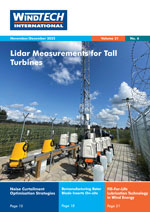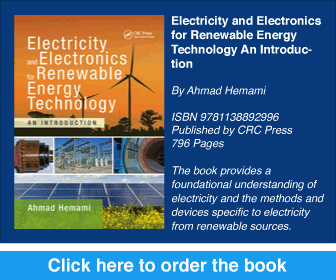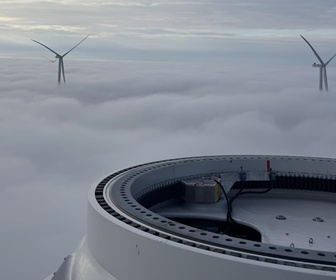- Category: Articles
Requirements, Experiences and Prospects
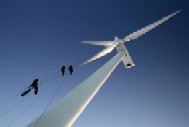 The wind turbine sector is growing quickly. The number and capacity of wind turbines has grown substantially in the last few years, and there is the prospect of greatly increased capacity as newly developed turbines are installed. This article will discuss the current requirements for the monitoring and inspection of wind turbines and explain the importance of regular inspections, carried out by accredited experts. There will be a discussion of the current position, based on the experience gained during the more than 2,000 wind turbine inspections carried out by GL Wind Energy.
The wind turbine sector is growing quickly. The number and capacity of wind turbines has grown substantially in the last few years, and there is the prospect of greatly increased capacity as newly developed turbines are installed. This article will discuss the current requirements for the monitoring and inspection of wind turbines and explain the importance of regular inspections, carried out by accredited experts. There will be a discussion of the current position, based on the experience gained during the more than 2,000 wind turbine inspections carried out by GL Wind Energy.By Torsten Muuss, Germanischer Lloyd Industrial Services, Germany
- Category: Articles
Rethinking Sodar for Wind Site Profiling
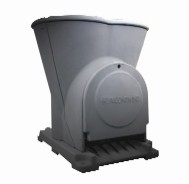 Accurate assessment of the resource at potential wind-energy sites is becoming more critical. The 60m met towers most commonly used for site assessment are decreasingly effective as turbines grow taller. Sodar devices, which measure wind speed and direction at any height up to about 200m, are a potential solution. Although manned sodar products are now common for short-term profiling, they have many shortcomings for long-term assessment. In this article, the author describes the innovations of Second Wind's Triton sonic wind profiler, which was designed to replace met masts for many assessment applications.
Accurate assessment of the resource at potential wind-energy sites is becoming more critical. The 60m met towers most commonly used for site assessment are decreasingly effective as turbines grow taller. Sodar devices, which measure wind speed and direction at any height up to about 200m, are a potential solution. Although manned sodar products are now common for short-term profiling, they have many shortcomings for long-term assessment. In this article, the author describes the innovations of Second Wind's Triton sonic wind profiler, which was designed to replace met masts for many assessment applications.By Walter Sass, CEO and Chief Engineer at Second Wind, USA
- Category: Articles
Legal Challenges Facing Wind Power Can be a Breeze with Proper Planning
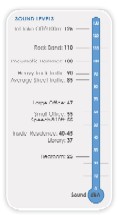 Rapid growth in the US wind industry is increasingly placing wind farm developments closer to where people live and work, escalating chances for development conflicts. An understanding of the uncertain regulatory climate within the USA, along with planning and good communication, can go a long way to avoiding the conflicts and legal challenges that can easily derail a project. The purpose of this article is to describe the existing US domestic wind farm development landscape and outline issues to consider before and during wind energy projects. As a second component, this article addresses ways to work proactively with communities to avoid conflict, as well as outlining legal defence strategies should nuisance lawsuits arise.
Rapid growth in the US wind industry is increasingly placing wind farm developments closer to where people live and work, escalating chances for development conflicts. An understanding of the uncertain regulatory climate within the USA, along with planning and good communication, can go a long way to avoiding the conflicts and legal challenges that can easily derail a project. The purpose of this article is to describe the existing US domestic wind farm development landscape and outline issues to consider before and during wind energy projects. As a second component, this article addresses ways to work proactively with communities to avoid conflict, as well as outlining legal defence strategies should nuisance lawsuits arise.
By Trey Cox, Attorney, Lynn Tillotson & Pinker, Dallas, Texas
.
 Rapid growth in the US wind industry is increasingly placing wind farm developments closer to where people live and work, escalating chances for development conflicts. An understanding of the uncertain regulatory climate within the USA, along with planning and good communication, can go a long way to avoiding the conflicts and legal challenges that can easily derail a project. The purpose of this article is to describe the existing US domestic wind farm development landscape and outline issues to consider before and during wind energy projects. As a second component, this article addresses ways to work proactively with communities to avoid conflict, as well as outlining legal defence strategies should nuisance lawsuits arise.
Rapid growth in the US wind industry is increasingly placing wind farm developments closer to where people live and work, escalating chances for development conflicts. An understanding of the uncertain regulatory climate within the USA, along with planning and good communication, can go a long way to avoiding the conflicts and legal challenges that can easily derail a project. The purpose of this article is to describe the existing US domestic wind farm development landscape and outline issues to consider before and during wind energy projects. As a second component, this article addresses ways to work proactively with communities to avoid conflict, as well as outlining legal defence strategies should nuisance lawsuits arise.By Trey Cox, Attorney, Lynn Tillotson & Pinker, Dallas, Texas
- Category: Articles
New Special Grease for All Rolling Bearing Applications in Wind Power
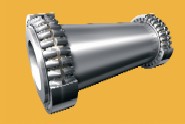 As the various rolling bearings in a wind power plant operate under very different conditions, it would appear that the use of different lubricants, maybe even from different manufacturers, is a must. For the operator, this means complex logistics and costly storage, but also the risk of a wrong lubricant being used by mistake, and a generally inefficient use of resources. However, a new speciality grease from Klüber Lubrication, Klüberplex BEM 41-141, can be used for the lubrication of all rolling bearings in a wind power plant. This grease not only meets the requirements of the main bearing, generator bearing, yaw bearings and rotor blade pitch bearings without restriction but also helps to improve operational reliability of the power station. If in addition the white adhesive lubricant Klüberplex AG 11-462 is used for the open yaw and pitch adjustment gears, only two lubricants will be required to supply all friction points in a wind power plant that requires grease lubrication.
As the various rolling bearings in a wind power plant operate under very different conditions, it would appear that the use of different lubricants, maybe even from different manufacturers, is a must. For the operator, this means complex logistics and costly storage, but also the risk of a wrong lubricant being used by mistake, and a generally inefficient use of resources. However, a new speciality grease from Klüber Lubrication, Klüberplex BEM 41-141, can be used for the lubrication of all rolling bearings in a wind power plant. This grease not only meets the requirements of the main bearing, generator bearing, yaw bearings and rotor blade pitch bearings without restriction but also helps to improve operational reliability of the power station. If in addition the white adhesive lubricant Klüberplex AG 11-462 is used for the open yaw and pitch adjustment gears, only two lubricants will be required to supply all friction points in a wind power plant that requires grease lubrication.By Peter Mages, Industry Group Manager Marketing and Application Engineering, and Ari-Pekka Holm, Global Accounts Manager Wind Energy, Klüber Lubrication München KG, Germany
- Category: Articles
A Status Report on a Community Owned Offshore Wind Farm
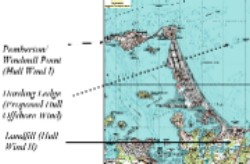 Hull, Massachusetts, is a remarkable US coastal community. Since 2001 Hull Municipal Light Plant (HMLP) has owned and operated ‘Hull Wind I', the largest wind turbine (660kW) that had been installed in the state up to that time. More recently (2006), HMLP installed a second, larger (1.8MW) wind turbine, Hull Wind II. Now the town has started a project that is intended to result in the installation of an offshore wind farm, with a capacity of approximately 14MW. This project has two unusual features, at least in the USA. First of all, it involves a community owned and operated wind energy facility that will supply a large fraction of the community's electrical requirement. Second, this third wind energy facility will be offshore. In this article, the overall scope of this project, its key technical aspects and its current status will be described.
Hull, Massachusetts, is a remarkable US coastal community. Since 2001 Hull Municipal Light Plant (HMLP) has owned and operated ‘Hull Wind I', the largest wind turbine (660kW) that had been installed in the state up to that time. More recently (2006), HMLP installed a second, larger (1.8MW) wind turbine, Hull Wind II. Now the town has started a project that is intended to result in the installation of an offshore wind farm, with a capacity of approximately 14MW. This project has two unusual features, at least in the USA. First of all, it involves a community owned and operated wind energy facility that will supply a large fraction of the community's electrical requirement. Second, this third wind energy facility will be offshore. In this article, the overall scope of this project, its key technical aspects and its current status will be described.By J. F. Manwell, J. G. McGowan and C. N. Elkinton, Renewable Energy Research Laboratory, Department of Mechanical and Industrial Engineering, University of Massachusetts, USA
- Category: Articles
Harnessing a Tried and Tested Novel Technology
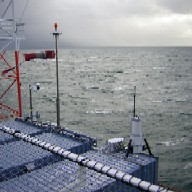 Remote sensing methods such as sodar and laser anemometry (lidar) offer a means of obtaining accurate wind profiles for wind resource assessment, and hence reduce costs and risks associated with the siting of fixed masts. However, these techniques need to be extensively validated in order to obtain widespread acceptance by the industry. At the forefront of this process, QinetiQ, a UK research and development laboratory, has developed ZephIR - a laser anemometer which exploits decades of lidar research. QinetiQ began a programme to develop a commercial fibre-based lidar in 2001 in close collaboration with Risø, Denmark's National Research Centre; its ZephIR product is now becoming an established tool for wind profiling in the wind energy industry. In March 2007 Natural Power exclusively licensed the technology from QinetiQ to bring ZephIR to the global market and commence serial production. ZephIR has been tried and tested by the community, including an offshore evaluation programme with Germanischer Lloyd's WindTest on the FINO1 platform, and has demonstrated 100% availability and exceptional correlations with fixed masts. Systems have been deployed successfully around the world in many demanding applications that illustrate the flexibility and robustness of the solution.
Remote sensing methods such as sodar and laser anemometry (lidar) offer a means of obtaining accurate wind profiles for wind resource assessment, and hence reduce costs and risks associated with the siting of fixed masts. However, these techniques need to be extensively validated in order to obtain widespread acceptance by the industry. At the forefront of this process, QinetiQ, a UK research and development laboratory, has developed ZephIR - a laser anemometer which exploits decades of lidar research. QinetiQ began a programme to develop a commercial fibre-based lidar in 2001 in close collaboration with Risø, Denmark's National Research Centre; its ZephIR product is now becoming an established tool for wind profiling in the wind energy industry. In March 2007 Natural Power exclusively licensed the technology from QinetiQ to bring ZephIR to the global market and commence serial production. ZephIR has been tried and tested by the community, including an offshore evaluation programme with Germanischer Lloyd's WindTest on the FINO1 platform, and has demonstrated 100% availability and exceptional correlations with fixed masts. Systems have been deployed successfully around the world in many demanding applications that illustrate the flexibility and robustness of the solution.By Michael Harris, QinetiQ Fellow, QinetiQ Ltd, and Ian Locker, Director-ZephIR, Natural Power
.- Category: Articles
Solutions to Tower Challenges in New Damper Technology
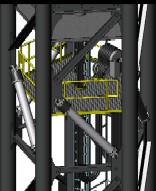 Damping of large structures to enable more cost-effective systems has been demonstrated by LORD Corporation's engineering team as they work with the Wind Tower Systems design division of Wasatch Wind (WW). WW is a new development venture based in Heber City, Utah, allied to Brigham Young University and Windward Engineering (an aero-elastic turbine modeller). WW's Wind Tower Systems division has developed a unique space frame tower to support large wind turbines, made up of segments of steel tubes assembled into a 3D matrix. The lighter tower is made possible through the use of proprietary damped struts in specific tower locations. The struts are structural members of the tower, and comprise an outer tube material of lower stiffness than the inner, so that a relative motion is created between them during dynamic loading events from the turbine. For aesthetic reasons, and to prevent bird perching, the frame is covered overall with a non-structural skin, essentially achieving the look of a typical steel tube tower. This new design enables installed-tower cost reductions of 20 to 35%, depending on turbine size.
Damping of large structures to enable more cost-effective systems has been demonstrated by LORD Corporation's engineering team as they work with the Wind Tower Systems design division of Wasatch Wind (WW). WW is a new development venture based in Heber City, Utah, allied to Brigham Young University and Windward Engineering (an aero-elastic turbine modeller). WW's Wind Tower Systems division has developed a unique space frame tower to support large wind turbines, made up of segments of steel tubes assembled into a 3D matrix. The lighter tower is made possible through the use of proprietary damped struts in specific tower locations. The struts are structural members of the tower, and comprise an outer tube material of lower stiffness than the inner, so that a relative motion is created between them during dynamic loading events from the turbine. For aesthetic reasons, and to prevent bird perching, the frame is covered overall with a non-structural skin, essentially achieving the look of a typical steel tube tower. This new design enables installed-tower cost reductions of 20 to 35%, depending on turbine size.By Bryan Haltom, Market Development Manager, LORD Corporation, USA
.


